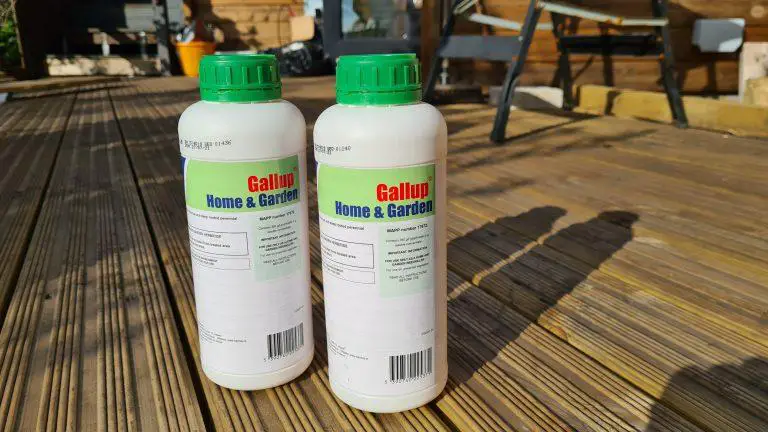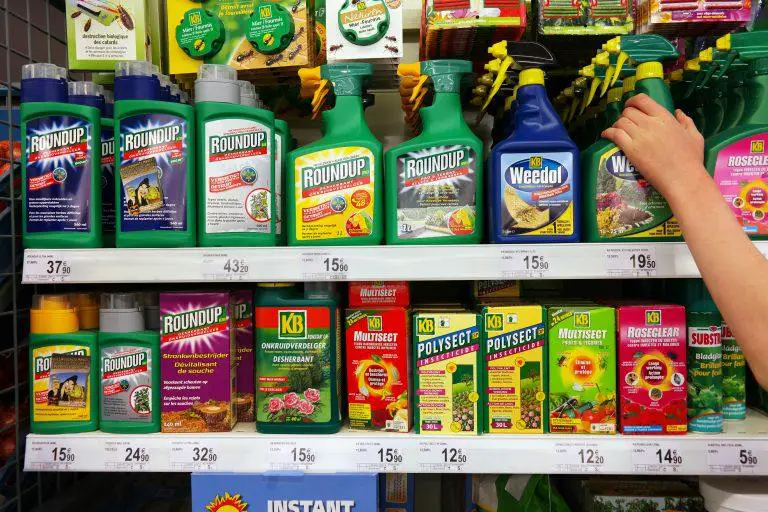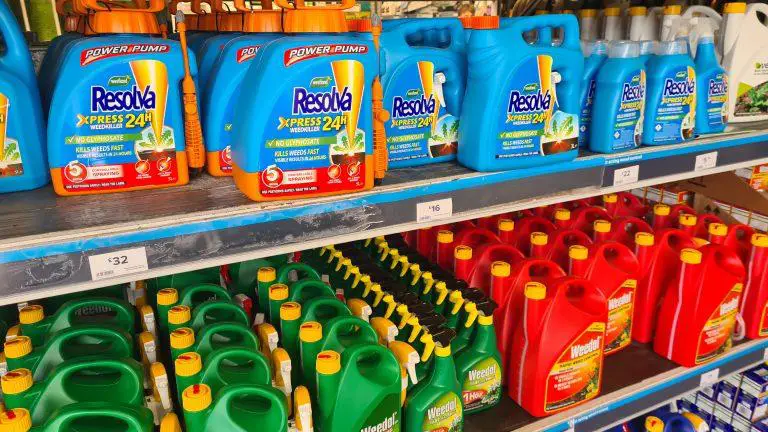Glyphosate is one of the most widely used herbicides in the world and is the active ingredient in Roundup. It has been around since 1974 and is used to control weeds in agricultural fields, lawns, gardens, parks, roadsides and other areas where unwanted plants grow.
Glyphosate works by inhibiting an enzyme found only in plants that are necessary for their growth and survival. As a result, it kills any plant it comes into contact with. Despite its effectiveness as a weed killer, there have been questions raised about its safety for human health and the environment.
In this article, we will explore what glyphosate is and how it works to control weeds while also looking at some of the potential risks associated with its use.

What is Glyphosate and How Does it Work?
Glyphosate is a broad-spectrum herbicide, meaning that it kills many different types of plants. It works by inhibiting an enzyme called EPSP synthase, which is found in all plants but not in animals or humans.
By blocking this enzyme, glyphosate prevents the plant from producing key proteins needed for growth and reproduction. Without these proteins, the plant will die. Glyphosate is absorbed through the leaves and roots of a plant, travelling to the meristematic tissues where it can disrupt cell division. This ultimately kills the entire organism.
Glyphosate works best when applied directly to actively growing plants. It can be used pre-planting or post-harvest, however, glyphosate is not effective on dormant plants. It can also be used in combination with other herbicides to create a more comprehensive weed control program.
Glyphosate is one of the most widely used herbicides in the world, and it has been found to be relatively safe for human use when applied in the prescribed manner. It is important to read the instructions and take all safety precautions when handling this product.
Glyphosate is a powerful tool for weed management, however, it is important to use it responsibly to ensure that its benefits can be enjoyed by everyone.

Potential Risks of Glyphosate
While glyphosate is generally considered safe for human use when used correctly, some studies have raised questions about its safety. A possible link between the use of glyphosate and cancer has been suggested by some studies, although this remains an area of debate.
Additionally, there are concerns that long-term exposure to glyphosate can lead to other health issues such as kidney and liver damage. It is also important to consider the potential environmental risks of using glyphosate, particularly in regard to its effects on beneficial organisms like bees, birds, and other pollinators.
Chemical Properties of Glyphosate
Glyphosate has been found to be effective at controlling a wide range of weeds, including most annual and perennial grasses, broadleaf weeds and woody plants. It can also be used as a pre-emergent herbicide to prevent weed seeds from germinating.
Glyphosate is known to be non-selective, meaning that it will kill any plant it comes into contact with. This makes it an effective weed killer but also means that it must be used carefully to avoid damaging desirable plants.

Health Risks Associated with Glyphosate
Despite its effectiveness as a herbicide, there has been some concern raised about the potential risks associated with the use of glyphosate.
Studies have found that glyphosate can accumulate in the environment, potentially leading to adverse effects on non-target organisms such as birds and bees.
Additionally, there is some evidence that glyphosate may be linked to cancer in humans, although further research is needed to confirm this link.
Overall, it’s important to understand the potential risks associated with using glyphosate before deciding if it’s the best choice for controlling weeds.
However, it is also important to recognize its effectiveness as a herbicide and its role in helping to manage unwanted vegetation. With careful use, glyphosate can be a valuable tool for keeping plants under control.

Controversies and Debates
Despite its popularity with farmers and gardeners alike, there have been numerous questions raised about its safety for both humans and wildlife.
The International Agency for Research on Cancer (IARC) classified glyphosate as “probably carcinogenic” in 2015, leading to public outcry over its usage. This sparked further debates regarding potential health risks associated with exposure to this chemical compound which continues even today.
In addition to its potential carcinogenicity, there are also concerns about glyphosate’s effects on the environment. It has been linked to lower biodiversity within ecosystems, as well as disturbances in soil composition and nutrient cycling due to its ability to bind with organic matter.
Other environmental issues include water contamination, particularly if it is used near or over bodies of water, and the potential for glyphosate-resistant weeds to evolve.
There are also numerous reports of farmers suffering from a range of health problems that they believe are caused by their extended exposure to glyphosate. From skin rashes to respiratory illnesses, these complaints have raised questions about how much exposure is safe for humans and whether more regulations should be enacted in regard to its usage.
In spite of these controversies and debates, glyphosate continues to be widely used by farmers, gardeners, and landscapers around the world. As long as it is applied correctly according to label guidelines and safety regulations, there is no reason why this chemical compound should not remain a popular choice for controlling weeds. However, further research is needed to ensure that it is being used safely and with minimal environmental impact.
For now, the scientific community continues to debate questions surrounding its potential health effects and environmental concerns, while farmers, gardeners, and landscapers alike rely on glyphosate as an effective weed-control solution. Only time will tell how these debates play out and what the future holds for glyphosate and its usage.

Glyphosate and the Environment
Glyphosate is a widely used herbicide that has been linked to environmental damage. Glyphosate is a synthetic chemical compound designed to kill weeds and other unwanted vegetation, but it can have unintended consequences for the environment.
In addition to killing targeted plants, glyphosate can also contaminate water sources and harm wildlife. Studies have found that glyphosate accumulates in soil over time, potentially resulting in long-term adverse effects on ecosystems.
There is also evidence linking glyphosate exposure to health problems in humans, including cancer and reproductive issues. These findings are concerning as the use of glyphosate continues to rise globally with no clear regulations or restrictions in place yet.
Governments, researchers and the public need to work together to understand the full consequences of glyphosate exposure on humans and our environment in order to develop appropriate policies that can protect us all.

Effects on Non-Target Organisms
Glyphosate is a herbicide widely used in agriculture, forestry and urban areas to control weeds. While it has been considered safe for use when applied correctly, research has suggested that its use can have adverse effects on non-target organisms. This includes a range of species from bacteria to mammals such as birds, amphibians and humans.
Glyphosate can cause damage to the environment by reducing biodiversity, impacting food webs and disrupting essential ecosystem functions. In addition, glyphosate may also be toxic to beneficial insects such as pollinators or soil-dwelling invertebrates like earthworms which are important for maintaining healthy soils.
Therefore, understanding the potential impacts of glyphosate on non-target organisms is essential for assessing its overall environmental sustainability.
Environmental Contamination from the use of glyphosate
The use of glyphosate, a popular weedkiller and herbicide, has come under scrutiny in recent years due to its potential environmental contamination. Glyphosate is used widely in agriculture and other industries as an effective way to control weeds and unwanted plants.
However, it can also have unintended consequences on the environment when misused or over-applied. This includes polluting local water sources with toxic chemicals, killing beneficial insects, reducing soil fertility levels and even impacting human health.
In addition to these direct effects from the chemical itself, there are also indirect impacts such as increased greenhouse gas emissions from crop cultivation that rely heavily on glyphosate for weed control. It is therefore important for us to be aware of the risks associated with this powerful chemical so that we can take steps to mitigate them.

Ecological Impacts from the use of glyphosate
Glyphosate’s potential impacts range from killing off beneficial insects, polluting surface water and groundwater, causing reduced biodiversity of plant species, causing soil erosion, contributing to global warming through the production of nitrous oxide emissions, increasing the risk of cancer among humans who are exposed to it directly or indirectly via food sources that were grown with glyphosate applications as well as other negative effects on human health such as endocrine disruption.
All these factors contribute to an overall decrease in ecosystem health which can have long-term implications for our planet’s future.
Implications for Agriculture and the Environment
The use of glyphosate as a herbicide has become increasingly widespread in the last few decades, with its application to croplands and non-crop areas for weed control. While it is an effective method for controlling weeds, there are implications that must be considered when using this chemical.
The long-term effects on agricultural production, biodiversity and ecosystems can be profound, making it essential to understand these impacts before applying glyphosate or any other herbicide.
Agricultural production is likely to be affected by the use of glyphosate because it may kill beneficial organisms and plants, such as cover crops and legumes. Glyphosate can also reduce the diversity of microbial communities in soil, which can make soils less productive. It has been shown to decrease crop yields when applied over multiple growing seasons.
Additionally, it can become more concentrated in the environment over time, leading to higher levels of chemical residues in food products.
The impacts of glyphosate on biodiversity and ecosystems are also concerning. Glyphosate has been found to reduce the abundance of beneficial insects, such as pollinators, beneficial predators, and other organisms that provide important services for agricultural ecosystems. Additionally, it has been linked to the decline of amphibians, reptiles, and other wildlife due to changes in aquatic ecosystems.
Finally, glyphosate can have negative impacts on soil health through a decrease in microbial activity. This can reduce the availability of nutrients for crop growth and lead to increased levels of runoff from fields. Runoff containing glyphosate can pollute surface and groundwater, which can have long-term impacts on aquatic life.
In summary, the use of glyphosate as a herbicide has many potential implications for agriculture and the environment, including decreased crop yields, reduced biodiversity, and negative impacts on soil health. It is essential to understand these impacts before applying any herbicide in order to protect agricultural production and the environment.
By understanding the implications of using glyphosate, farmers can make informed decisions that will help ensure sustainable agricultural systems.
In conclusion
In conclusion, glyphosate is a widely used herbicide that has been found to be relatively safe for human use when used correctly. However, there are some potential risks associated with its use that need to be considered. It is important to always read the label and follow all safety precautions when using this product.
Additionally, it is important to consider the potential environmental impacts of glyphosate before using this product. By understanding how glyphosate works and the associated risks, you can make an informed decision regarding its use.








